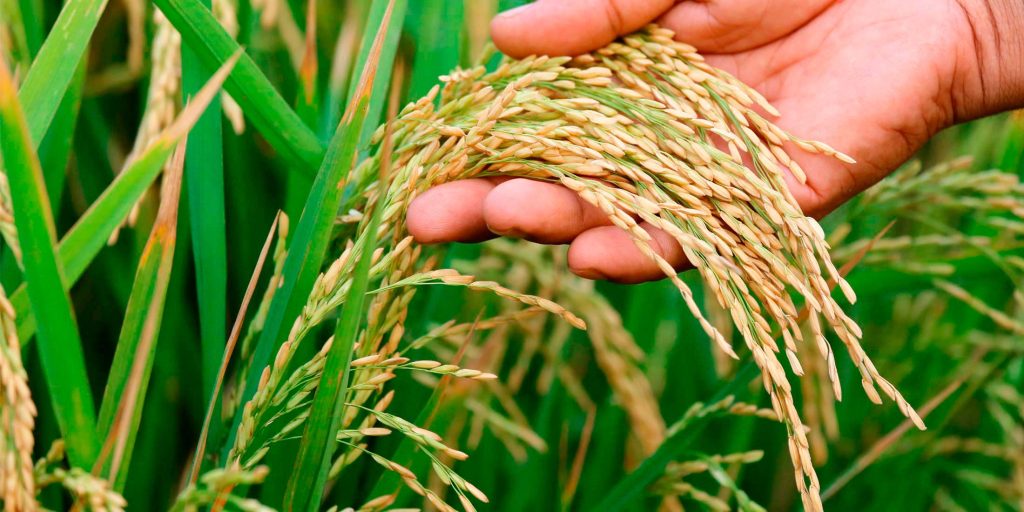Tags
When will Nepal achieve rice self-sufficiency?
Boby Basnet

Rice is Nepal’s primary staple crop, serving as a daily essential in nearly every household. Whether rich or poor, rice is a common meal that satisfies the hunger of most Nepali. As an agrarian country, much of Nepal’s population is engaged in farming, and rice farming is a central focus for securing food year-round.
However, Nepal’s diverse geography poses unique challenges to rice cultivation. In the eastern Terai, heavy rainfall often causes flooding and landslides, while the western Terai struggles with droughts due to insufficient rain. In regions that rely solely on rainfall, droughts have delayed the start of the rice farming season.
These climatic variations across regions make it difficult to uniformly address the challenges faced by rice farmers.
Advancement and challenges
To tackle such issues, the Nepal Agricultural Research Council (NARC) has developed 157 rice varieties, including 99 open-pollinated and 58 hybrid varieties, designed to withstand climate challenges. These include drought-resistant varieties like Sukhkha Dhan-1 to Sukhkha Dhan-6, flood-tolerant varieties such as Swarna Sub-1 and Sawa Masuli Sub-1, and rice varieties like Bahuguni Dhan-1 and Bahuguni Dhan-2, which can survive both drought and flooding. Additionally, cold-tolerant varieties like Lekali Dhan-1 and Chandanath-3 are suited for higher altitudes.
Despite these advancements, Nepal’s overall rice cultivation area, production, and productivity have seen only marginal improvements over the past decade. Under the 15th Five-Year Plan (2076/77 BS-2080/81 BS), the goal for rice productivity was set at 4.5 metric tons per hectare, but by 2079/80 BS, productivity reached only 3.78 metric tons per hectare-far below the target.
The area dedicated to rice cultivation has also fluctuated. In the fiscal year 2069/70 BS, rice was grown on 1,420,570 hectares, which was reduced slightly to 1,447,789 hectares by 2079/80 BS. Similarly, rice production peaked at 5.6 million metric tons in 2075/76 BS but dropped to 5.13 million metric tons by 2078/79 BS.
Moreover, Nepal remains heavily reliant on imported rice to meet its demand. In the first 11 months of fiscal year 2079/80 BS, the country imported rice and paddy worth Rs 33.64 billion, including 1,882.98 metric tons of paddy seeds, 504,898.63 metric tons of paddy, and 208,919.59 metric tons of rice.
This dependence on foreign rice clearly shows that Nepal is far from being self-sufficient in rice production.
One of the critical issues hindering rice self-sufficiency is the lack of access to necessary inputs, such as fertilisers, seeds, and irrigation, despite significant budget allocations to agriculture. Farmers often face acute shortages of these resources during peak planting seasons, like the monsoon, which negatively affects rice production and productivity.
Although NARC has developed numerous climate-adapted rice varieties, many farmers have not yet received access to these improved seeds, underscoring the need for greater efforts to promote and distribute them.
Additional challenges include unreliable irrigation systems, an over-reliance on rainwater, and the increasing impacts of climate change. Extreme weather patterns, such as prolonged droughts or sudden floods, have negatively impacted rice yields.
Rising temperatures have also led to increased threats from pests and diseases. Farmers are further burdened by the lack of modern agricultural technology and the persistent issue of not receiving fertilizers and seeds on time.
Way out
Historically, Nepal’s national budget has not prioritised the agriculture sector. Although last year’s budget allocated Rs 30 billion for chemical fertiliser subsidies, there were no significant new initiatives aimed at promoting rice cultivation.
To address this, local governments must collaborate closely with farmers, agricultural experts, and extension officers to support the preservation of indigenous rice varieties and adopt climate-resilient farming technologies. Ensuring that farmers have consistent access to fertilizers, seeds, and irrigation is essential for boosting production.
Additionally, forming task forces at the local level to mitigate the impact of pests and diseases would help prevent crop losses. Coordinated efforts between federal and provincial governments, agricultural research institutions, and local farmers are essential for tackling these issues. NARC, for instance, could play a more active role by testing climate-resilient rice varieties directly in farmers’ fields and disseminating the results through agricultural extension workers.
Ultimately, Nepal can move toward rice self-sufficiency only by addressing these challenges and providing farmers with the necessary tools, knowledge, and support. While many strategies and varieties have been developed, the key lies in effective implementation and grassroots support. Without these steps, Nepal will continue to rely on imports to meet its rice consumption needs.
https://english.onlinekhabar.com/when-will-nepal-achieve-rice-self-sufficiency.htmlPublished Date: October 1, 2024






